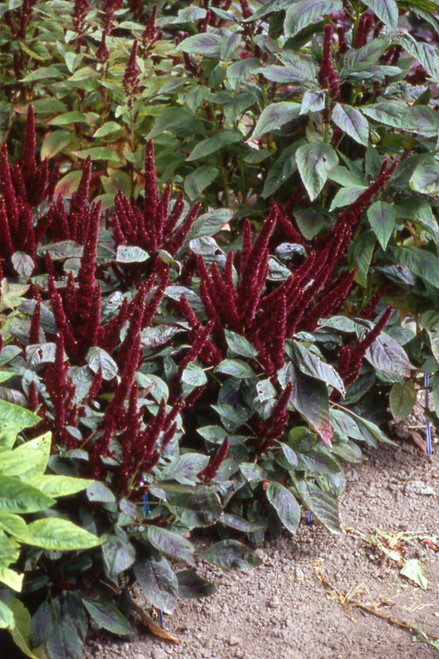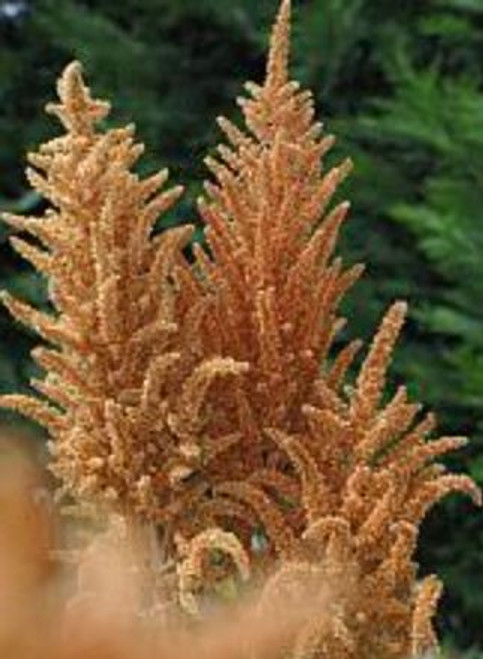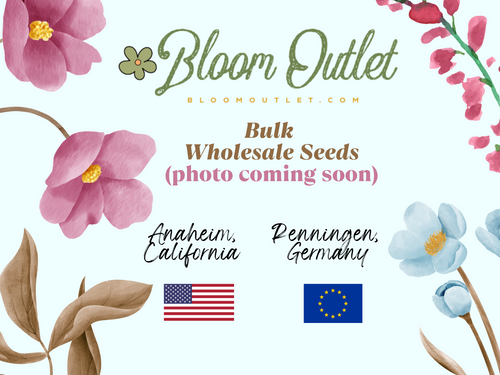Amaranthus are annuals or short-lived perennials, grown for their dense panicles of tiny flowers or their colorful foliage. Grow in a sunny position in fertile, well-drained soil (neutral to acidic). Will tolerate partial shade and will grow adequately in poor soils. Dense clay soils are unsuitable for Amaranths. Commonly known as Love-lies-bleeding, Amaranth, Tassel flower, Pigweeds, Prince’s feather, Chinese spinach, Tampala. Some species are cultivated as leaf vegetables and some as ornamental plants. The densely packed flowers grow in summer or autumn with a range of colors from maroon to crimson and can grow up to 3 to 8 feet (1 to 2.5m). The stems are often reddish in color and a single plant can produce hundreds or thousands of seeds, borne singly in dry capsule fruits.
USES: Cottage gardens, Vegetable gardens, Containers, Beds, Cut Flowers, Dried flowers, Borders
TOLERATES: Heat, Drought, Poor Soils, Humidity, Salt
Botanical Name: Amaranthus hypochondriacus ‘Pygmy Torch’
Common Name: Prince of Wales Feather, Prince’s Feather, Dwarf Amaranth
Type: Bushy Annual
Flower Color: Erect, maroon flower spikes with dark purple-green leaves 6 in. (15cm) long.
Flowering Time: June to October
Plant Height: 12-18 in. (30-45cm)
Plant Width: 12 in. (30cm)
Light Requirements: Full Sun
Water Requirements: Average / Moist
Soil Requirements: Well drained, moderately fertile, humus rich soil
AHS Heat Zone: 12-1
Sowing Instructions (Cliff Notes Version): Under glass grow in a soil based potting mix and provide high humidity at 68°F (20°C) in mid spring. Thin to 24 in. (60cm) apart. Water freely during dry periods in summer to prolong flowering.
Click here for Planting Instructions








